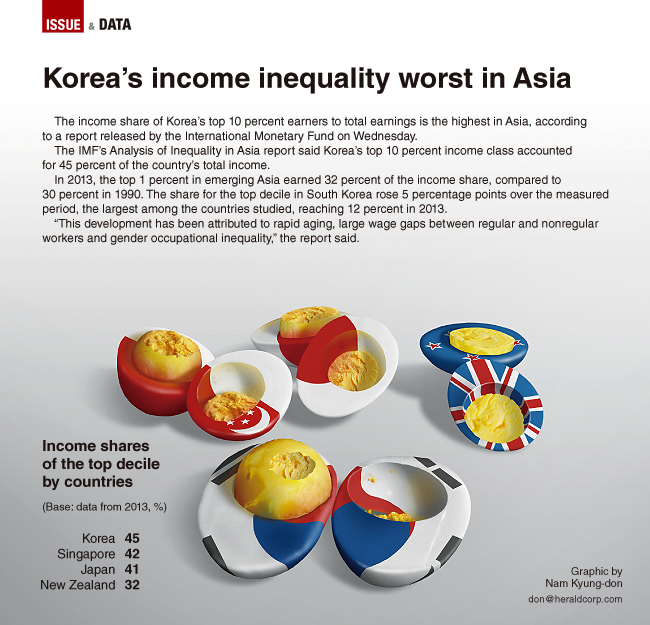Number of Newborn Babies Reach Lowest Ever: South Korea’s Growth Engine Dies Down(Kyunghyang)
Number of Newborn Babies Reach Lowest Ever: South Korea’s Growth Engine Dies Down(Kyunghyang)
The total number of newborn babies this year has recorded the lowest ever as of April. If this trend continues, the number of babies born this year is expected to drop below the lowest annual figure of 435,031 (2005). The number of marriages has also sharply declined compared to last year, so the low birth rate trend is expected to worsen. The country is stuck in a marsh of slow growth and the number of newborn babies continues to drop every year. On top of that, as the productive population also heads downward, the South Korean economy is likely to see its growth engine deteriorate. Some experts even claim that the government’s policies to encourage childbirth and support childcare are actually fueling the current low fertility phenomenon.
 “The Vicious Cycle of Slow Growth: The Problem of the Low Birth Rate” Due to the falling birth rate, the number of newborn babies this year is expected to reach a record-breaking low. An empty baby bed is seen in a neonatal unit at Cheil General Hospital in Jung-gu, Seoul on June 23. Kim Chang-gil
“The Vicious Cycle of Slow Growth: The Problem of the Low Birth Rate” Due to the falling birth rate, the number of newborn babies this year is expected to reach a record-breaking low. An empty baby bed is seen in a neonatal unit at Cheil General Hospital in Jung-gu, Seoul on June 23. Kim Chang-gil
According to the “April Population Trend” released by Statistics Korea on June 23, only 35,300 babies were born in April, a 7.3% decrease from a year ago. This is the lowest monthly figure since they began collecting statistics in 2000. The decrease rate compared to the same month last year was also the biggest since November 2013 (-12.3%). The total number of babies born from January to April this year was 137,900, a 5.2% (8,100) decrease from the same period last year (156,000). The total number of newborn babies from January to April was smaller than the same period in 2005, the year that saw the smallest number of newborn babies (153,800). At this rate, we are likely to break that record this year.
The only local area where the number of newborn babies increased from January to April was Sejong-si. Daejeon saw its figures decrease by 11.8% and Seoul (-5.4%) and Gyeonggi-do (-5.2%) also witnessed a big drop in the number of newborn babies. Given that the reason for the increase in Sejong was because of special factors such as the relocation of government departments and national research institutes, the number of newborn babies is actually decreasing nationwide.
This is because young people are reluctant to get married and have children due to the economic recession and the growing housing prices. The number of marriages this year from January to April was 94,200, 6.9% less than the previous year (101,200). If the number of marriages thus drops, it will be difficult to expect the number of newborn babies to rise next year.
By next year, the number of children 14 years and younger will fall below the number of senior citizens aged 65 and older in South Korea, and the productive population (15-64) will decrease for the first time. The country is in desperate need of measures to slow down the rapid decrease in the population, but the government is only fueling distrust in childbirth and childcare policies with the recent controversy surrounding “customized childcare (limiting the time families can put their children aged 0-2 in childcare to six hours a day for single-income families)” following the conflict over the Nuri program. The government released a series of policies that raised labor intensity, such as performance-based salaries and easier layoffs, while neglecting to secure and expand the social safety net. Thus the nation is farther away from creating an environment where people can give birth to a child with peace of mind.
Jang Jin-hee, a research fellow at Seoul Foundation of Women & Family said, “When we analyze the reason people put off pregnancy and childbirth, the number one reason is economic conditions such as expensive housing prices and the cost of child-rearing. After giving birth to their first child and experiencing the difficulties in infant care, childcare, education, and also in keeping their careers, couples tend to give up on the idea of having a second child.”
#birth_rate #Korea #economic_choice?


 Population pyramid of Sourt Korea(2020)
Population pyramid of Sourt Korea(2020)
